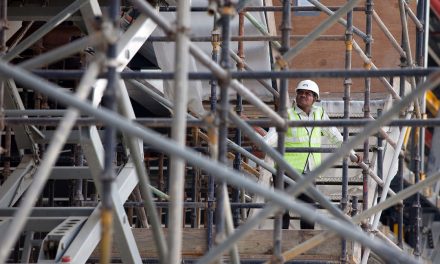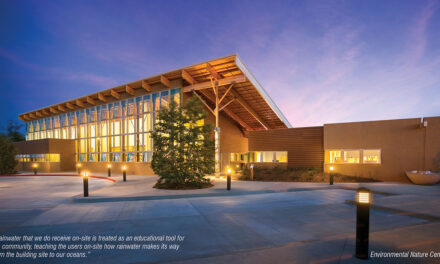A new online guide launched yesterday by the American Society of Landscape Architects (ASLA) explains how communities can better protect themselves from natural disasters through resilient landscape planning and design. The Resilient Design Guide is found at https://www.asla.org/resilient
According to the guide, the goal of resilient landscape planning and design is to retrofit communities to recover more quickly from extreme events—now and in the future. In an era when disasters can cause traditional built systems to fail, adaptive multilayered systems can maintain their vital functions and are often the more cost-effective and practical solutions.
The guide is organized around disruptive events that communities now experience: drought, extreme heat, fire, flooding and landslides. Biodiversity loss is an underlying threat also explored.
The guide includes hundreds of case studies and resources demonstrating multi-benefit systems as well as small-scale solutions. It also explains landscape architects’ role in the planning and design teams helping to make communities more resilient.
Resilient design involves working with nature—instead of in opposition to it. It provides value to communities, including:
- Risk Reduction. As events become more frequent and intense due to climate change, communities must adapt and redevelop to reduce potential risks and improve ecological and human health. It’s also time to stop putting communities and infrastructure in high-risk places. And communities must reduce sprawl, which further exacerbates the risks
- Scalability and Diversity. Resilient landscape planning and design offers a multi-layered system of protection, with diverse, scalable elements, any one of which can fail safely in the event of a catastrophe.
- Multiple Co-Benefits. Resilient landscape design solutions offer multiple benefits at once. For example, designed coastal buffers can also provide wildlife habitat and recreation opportunities; urban forests made up of diverse species clean the air while reducing the urban heat island effect; and green infrastructure designed to control flooding also provides needed community space and creates jobs.
- Regeneration. Disruptive natural events that are now occurring more frequently worldwide harm people and property. Resilient design helps communities come back stronger after these events. Long-term resilience is about continuously bouncing back and regenerating. It’s about learning how to cope with the ever-changing “new normal.”
In an age of rising waters and temperatures and diminishing budgets, the best defenses are adaptive, like nature.
The Resilient Design Guide has been strengthened through the expert guidance of Alexander Felson, ASLA, assistant professor, School of Forestry & Environmental Studies and Yale School of Architecture; Kristina Hill, Affiliate ASLA, associate professor of landscape architecture and environmental planning and urban design, University of California at Berkeley; Nina-Marie Lister, Hon. ASLA, graduate program director and associate professor, Ryerson University School of Urban and Regional Planning; Nate Wooten, Associate ASLA, landscape designer, OLIN; and Kongjian Yu, FASLA, founder and dean, Peking University College of Architecture and Landscape.
About ASLA
Founded in 1899, the American Society of Landscape Architects is the national professional association for landscape architects, representing more than 15,000 members in 49 professional chapters and 72 student chapters. Members of the Society use “ASLA” after their names to denote membership and their commitment to the highest ethical standards of the profession. Landscape architects lead the stewardship, planning and design of our built and natural environments; the Society’s mission is to advance landscape architecture through advocacy, communication, education and fellowship.





